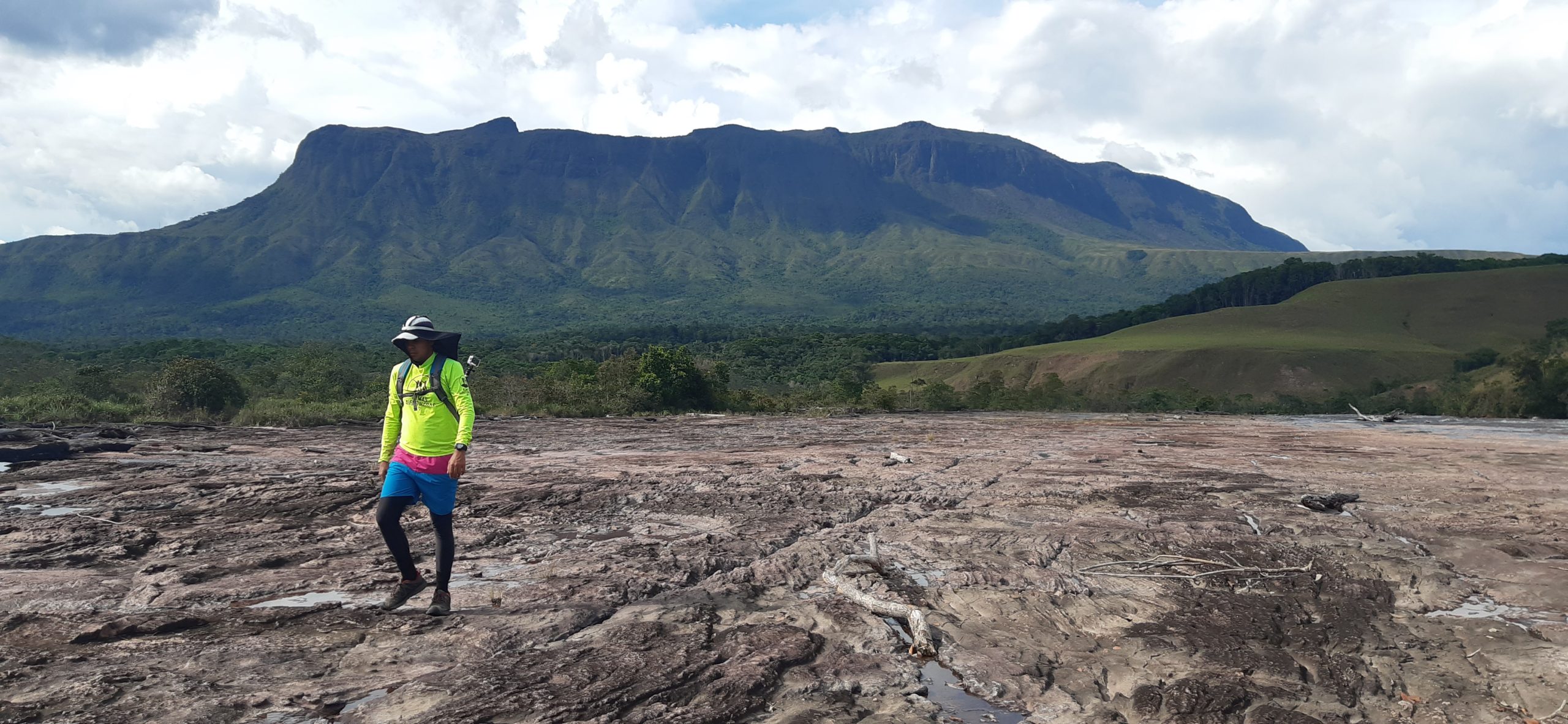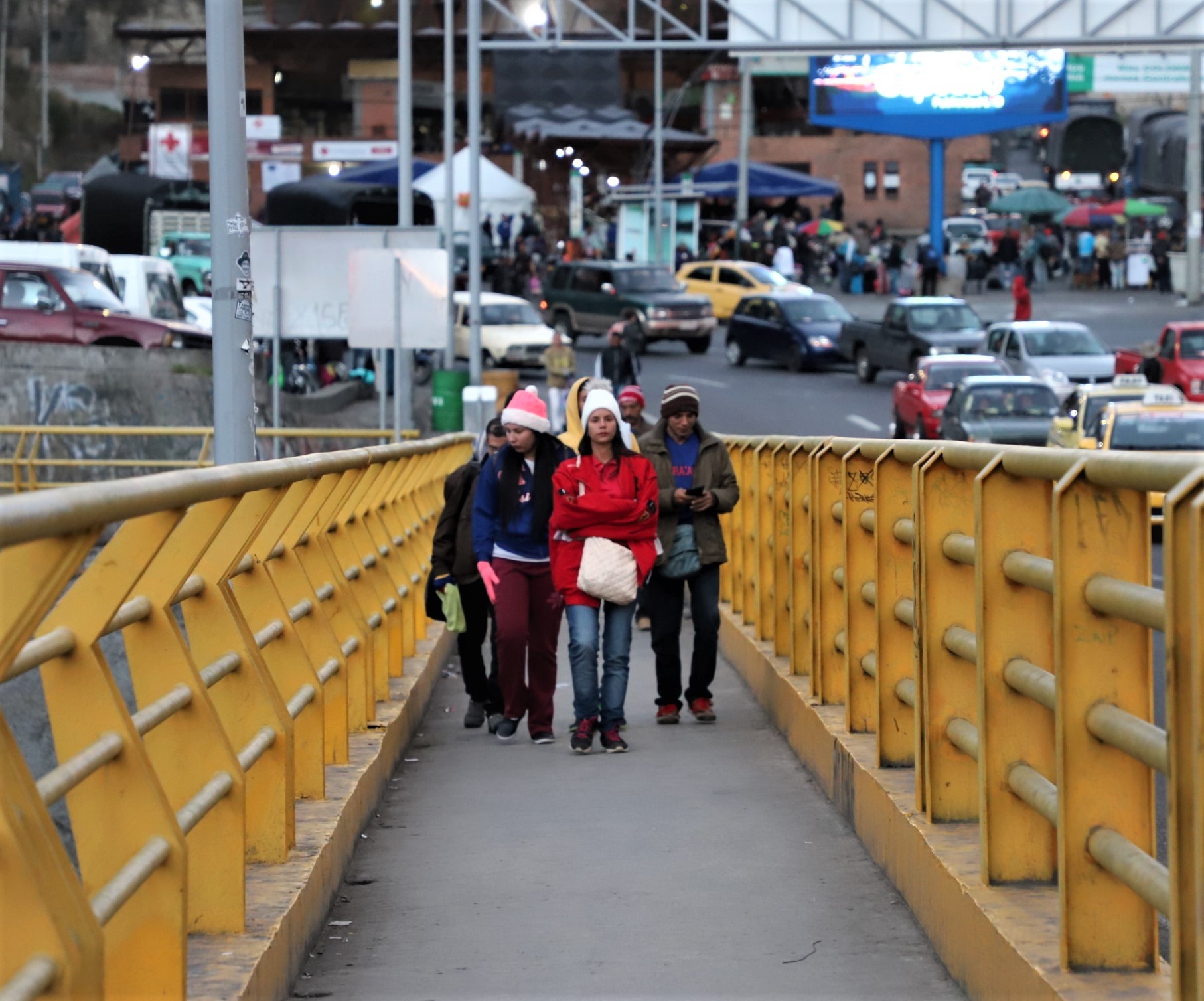The understanding of femicides and the phenomena associated with these crimes depend to a large extent on the availability of detailed records and statistics, since these data allow identifying the characteristics of the victim, the perpetrator, and the environment, establishing a relation between them, possible motivations and even behavior patterns, with the prospect of not only assessing the situation of violence against women but proposing suitable preventive policies.
Since 2016, the Venezuelan State has failed to publish figures on violence against women. The lack of gender-sensitive statistics in our country reveals the inability of the State to lead an institutional and coordinated action in the prevention of violence against women, which has increased all over the world during the emergency generated by the COVID-19 pandemic.
A social debt of the Venezuelan State
On November 26, 2020, the Attorney General of the Bolivarian Republic of Venezuela addressed through a message on Twitter the issue of the lack of statistics that the several women movements had raised in recent months, providing some type of information based on the registry of cases brought before the institution. Tarek William Saab wrote:
“Regarding the crime of femicide, 185 cases were recorded in 2020, including consummate femicides and frustrated femicides. In total, 167 people were deprived of liberty for this crime and 26 convictions have been issued.”
Unfortunately, this answer is not enough. It only mentioned the number of complaints received, the detentions, and the convictions registered during the year. They do not reveal the levels of violence, but rather the number of complaints received and two criteria for classification. Nor are they sufficient to be considered as indicators of the State’s response to violence against women. It does not disclose, for example, whether the 26 convictions mentioned by the Public Ministry are related to any of the 185 cases recorded during the year or, on the contrary, belong to cases registered in previous years. It also fails to illustrate the rate of effectiveness of the Public Ministry’s work, since it does not present a substantive figure to contrast it; for example, the numbers do not indicate whether the 26 convictions were the result of exactly 26 completed trials, or if they are part of the 185 complaints received, which would mean that a further 159 cases were dismissed.
After femicides became a crime, which occurred with the reform of the special law on the matter in 2014, the quality of the data in this regard did not increase as expected; on the contrary, it decreased and worsened, placing Venezuela among the group of countries in the region with the greatest deficiencies and weaknesses regarding the systematization and presentation of information related to femicides.
Civil society organizations call on the State to promote research, data collection, and compilation of not only the number of complaints received (which in itself does not fulfill the obligation to offer access to justice) but of the indicators on violence against women as a social phenomenon, its causes, and consequences.
We also hope for the systematic collection of data, broken down by categories, and periodically published with the due explanation on the methodology applied. It would be interesting to systematically gather elementary biographical antecedents: the relation between the victim and the perpetrators of violence; the context in which violence against women takes place; the process for filing a complaint; the search for help and the inconveniences encountered, and the nature of the damage and everything that derives from it.
Monitoring of femicides from June 14 to November 13, 2020
From June 14 to November 13, 2020, a period that corresponds to the fourth and eighth month of the pandemic, the digital media reported 103 cases of femicides.
Highlights:
- From June 14 to November 13, 2020, there was, on average, one femicide every 28 hours.
- In total, 41 boys and girls were orphaned.
- 6 boys and girls witnessed the femicide of their mother.
- In 56.3% of the cases, the events occurred in the woman’s house or in the house of both the victim and the perpetrator, that is, in the place that is supposed to be the safest.
- 5 of the 11 girls under the age of 12 who were victims of femicide suffered sexual abuse, and the other 6 girls died from physical violence. 8 of the 11 girls were killed by a family member.
- From June 14 to November 13, 2020, there was, on average, one child femicide every 10 days.
Characterization of victims in monitoring
- 99.9% of the victims were Venezuelan nationals.
- In 45.7% of the cases, the victim was aged 23 to 43 years.
- 11.8% were aged 64 to 80 years.
- 21.4% of the women victims of femicides were mothers.
- 4 of the victims were pregnant; 3 were strangled, the other burned.
Characterization of offenders in monitoring
- In 78.6% of the cases, the aggressor is a Venezuelan national.
- In 31.2% of the femicides analyzed, the aggressor was aged 19 to 22 years.
- In 8 cases it was determined that the aggressor was a police or military officer; 2 of them committed femicides through the use of a service pistol.
- 45.6% of the aggressors were apprehended.
- In 34% of cases, the aggressors remain on the run.
- In 3.9% of the cases, the aggressor died in a confrontation with the police.
- After having committed femicide, 8 of the aggressors committed suicide; 2 of them were police or military officers.
Relational bond
- In 31.1% of the cases, the victim lived or had lived with her aggressor, either by marriage or by a de facto union.
- In 21.4% of the cases analyzed, the aggressors were members of the same family (parents, uncles, brothers, cousins).
- In 20% of the cases, the link with the femicidal aggressor could not be established, and in most cases, their identity remained unknown.
Motives, modus operandi including ante and post-mortem violence and context of the femicides
- Regarding the apparent motive for femicide, 16.5% of the cases showed hatred and the exploitation of a condition of vulnerability,
- Followed by sexual assault in 14.6% of the cases,
- Systematic physical violence (12.6%),
- And possible revenge (11.7%).
- 9 offenders committed suicide. In 3 of these cases, the motive of the aggressor was linked to jealousy. In another case, mention is made of infidelity or a sexual attack.
- In 4.9% of the cases corresponds to frustrated femicides.
Data disaggregated by state
- From June 14 to November 13, 2020, femicides were more prevalent in the Capital District with 15.5% of the cases; the state of Miranda with 10.7%; Carabobo with 9.7% and Anzoátegui with 8.7% of the cases.
Signs of violence and causes of death
- 23.3% of the victims die from the blows they receive.
- In 20.4% of the cases analyzed, the signs of violence on the body of femicide victims are represented by a firearm wound. More than half of the cases of femicides where women were shot occurred in private settings.
- 11.7% of the victims showed signs of strangulation and died of suffocation.
- 10.7% died from multiple stabbing.
- A firearm was used in 21.4% of the cases analyzed.
- On this occasion, the use of the aggressor’s hands (strangulation, blows) rose to 34% of the cases analyzed.
Previous complaints
- In 98% of the cases analyzed, no reference was made to the specific formulation of a previous complaint by the victim.
Risk factors
- In 4.95% of cases, a history of harassment appears as a risk factor.
- In 6.8% of the cases, there is a history of threats or physical damage.
- In 13.6% of the cases analyzed, high levels of poverty, crime, and social conflict in vulnerable communities appeared as a risk factor.
Eyewitnesses
- In 18.4% of the cases, relatives and/or acquaintances of the victim witnessed her femicide. In another 9.7% of the cases, the witnesses were passersby.
- In 67% of the cases, there were no known witnesses. 42 of the 69 cases that lack information on whether or not there were eyewitnesses occurred in a private setting.
Deaths of Venezuelan women abroad
From June 14 to November 13, 2020, we gathered the following information:
- The month of occurrence: From the fourth to the eighth month of the quarantine, 28 Venezuelan women abroad were victims of femicides. 57.2% of these cases took place between August and September. On average, one femicide of a Venezuelan woman abroad occurs every 4 days.
- Place of occurrence: 67.7% of the femicides of Venezuelan women abroad occurred in Colombia, followed by Peru (10.7%).
- Age of the victim: 25% of the victims were aged 19 to 22 years old; 21.4% 23 to 27 years old, and 10.7% 28 to 31 years old. Now, we have that 60.7% of the Venezuelan victims of femicides abroad were under 31 years of age. (17 women). 13 of the 17 cases where the victim of femicide was under the age of 3 occurred in Colombia.
- Nationality of the aggressor: It was established that in 14.3% of the cases the aggressor was Venezuelan.
- The apparent motive of the aggressor: In 10.7% of the cases, the femicide was preceded by an episode of jealousy; in 17.9% of the cases, the context describes a motive of revenge. 17.9% are cases motivated by systematic physical violence.
- Signs of physical violence: In 32.1% of the cases, the victims present a gunshot wound as a sign of violence on their bodies; Another 32.1% of the cases involved mutilation, dismemberment, or stabbing.
- Cause of death: 42.9% of the victims die from a gunshot wound. 32.1% of the victims were stabbed to death.
- Aggressor linked to organized crime: In 17.9% of the cases, the aggressor was linked to organized crime.
- Use of weapons: In 42.9% of the cases analyzed, a firearm was used; in another 32.1% of the cases, a bladed weapon was used.
- Frustrated femicide: From the fourth to the eighth month of quarantine, there was one frustrated femicide.
- The apprehension of the aggressor: 46.4% of the aggressors have not been apprehended. 4 aggressors have died in the context of the events.
- Mother victims: 25% of women victims of violence were mothers.
- The number of orphans: In total, 9 Venezuelan children were orphaned by the femicide of their mothers.
- Children who witnessed the femicide of their mothers: Two Venezuelan children witnessed the femicide of their mothers.
- Pregnant victims: Two of the victims were pregnant.
- The suicide of the aggressor: It can be established that the 4 aggressors who died in the context of the events committed suicide. Another one tried and failed.
- The relation between the victim and the aggressor: In 32.1% of the cases, there was a relationship of intimate coexistence, marriage, or de facto union between the victim and the aggressor. 7.1% of the aggressors were a member of the same family. In 28.6% of the cases, the victim and her aggressor were not related.
- In 7,2% of the cases, the femicide took place in the context of sexual violence.
- Risk factors: 32.1% took place in vulnerable communities with high levels of poverty, crime, and social problems as risk factors.
Associated phenomena
Cepaz has raised the need to deepen and explore, from a gender perspective, the scope, connections, and exchanges between several phenomena associated with femicides in Venezuela, mainly emphasizing the following elements in an institutional prevention campaign:
- Femicides and orphaned children (boys, girls, and adolescents); (collateral victimization, identification, location, emotional consequences, reviews of regulatory frameworks, proposals).
- Femicides and the immediate suicide of the offender, and its implicit problems (repentance or extended suicide);
- Femicides and older victims; Did they experience a life of violence? Vulnerability and normalization; who are the offenders; motives.
- Femicides and the use of psychoactive substances; individual and collective experiences related to drug use, violence, and risky behavior.
- Femicides and lesbian or transgender women, transfemicide / transvesticide: multiple exclusions in spaces of sociability; structural conditions of vulnerability.
- Femicides and prior reporting as a risk factor for femicide (the emotional aspects of putting an end to a relationship marked by situations of violence and the reality of the protection measures in Venezuelan regulations).
- Femicides and handguns (a policy of social control with a gender perspective?)
- Femicides and police or military officers as the offenders or the mastermind behind the crime (the storage of service pistols at home; the police state)
- Femicides and organized crime (inscriptions and signs of violence on the woman’s body; implicit messages of power)
- Femicides and the media (content, language, and delivery clear of stereotypes or prejudices; analysis of information)
Now, our invitation to delve into those spaces of exploration is firmer than ever; especially when observing with concern the nuances that revolve around the phenomena associated with femicide that emerged in this monitoring.
We will highlight situations in which it is necessary to deepen the understanding of the phenomenon of femicide:
Adolescent aggressors in femicidal violence: The participation of adolescents who repeatedly transgress social norms and thus express tensions with those who represent the authority (parents, grandparents, uncles and aunts, teachers, etc.) through aggressive behavior, criminal acts and impulsive actions, reaching the maximum expression of gender-based violence, thus making necessary a characterization of their sociodemographic, physical, and family situation, criminal record and their reaction after the femicide and the reasons that induce and facilitate the commission of the crime.
Child femicide: From June 14 to November 13, 2020, murders of underage girls increased, not only due to sexual abuse (6 cases) but also physical violence (6 cases), becoming one of the most terrible consequences of the lockdown and that sees its prevention hindered by the restriction on free transit in the face of COVID19.
Participation of several aggressors in the crime: Seven cases have reflected the participation of a group of aggressors in the femicide; 2 of them were committed by groups of organized crime under the figure of hitmen. There were also 5 cases of group assaults for femicidal sexual violence.
Unlike sex crimes committed by a single individual, sex crimes committed by a group a people can be greatly influenced by the dynamics of the group itself, that is, by how it is formed, how it is maintained and how it evolves. Regarding the topic of gang rape, the news site “La Vanguardia” points out that “… The herd has the effect of triggering the patriarchal imaginary in which pain is eroticized and women are presented as dehumanized beings in service of men”. It is a context that deserves urgent attention and policy-making given the possibility that the increase in news and media coverage may have some kind of contagion effect.
Women co-perpetrators of femicides: We are talking about women who become active subjects of the crime of femicide, that is, women who murder other women for reasons of gender-based violence. In 12 of the cases analyzed, women were identified as co-perpetrators of the violent act that ended up in femicide.
Phenomena associated with the femicides of Venezuelan women abroad
“War between Venezuelan criminal gangs in Colombia”: Certain digital media are insistently expressing their concerns about an apparent situation of “war between criminal gangs” with allegedly Venezuelan members. Two women have been murdered and are mentioned as partners of the members of the alleged gangs, in apparent crimes of revenge. (See full description in the report).
“Nobody’s Bodies”: Another worrisome situation that emerged in this Monitoring when trying to establish the deaths of Venezuelan women in migratory transit to Colombia is the one linked to the death of Venezuelan women at the border. The so-called “nobody’s bodies” with tied hands and faces shattered by rifle bullets. They are killed when crossing from one country to another. They appear along the informal footpaths, the unofficial border crossings where the authority becomes blurred. (See full description in the report).
The Venezuelan LGBTI community in Colombia: In general, the deaths of members of the LGBTI community occur due to the rejection of the victims’ gender identity. They can be committed by an unknown person, someone with whom the victim has an occasional or stable emotional bond, or a pimp. Transphobic femicides or transvesticide are linked to a specific context of violence against those whose gender identity deviates from the hegemonic criteria of femininity and masculinity, so that the violence that is exercised against them is much more intense, in a sort of punishment for that deviance. The situation occurs in various areas of Colombia. (See full description in the report).
Femicides of Venezuelan sex workers in Colombia: (See full description in the report).
Deaths of Venezuelan women in the context of obstetric violence
The Organic Law on the Right of Women to a Life Free of Violence establishes that obstetric violence is a problem of justice and human rights that requires actions that systematically transform how women’s health care is conceived. Women. This type of violence takes place in the context of pregnancy, childbirth, and postpartum care in public and private health centers, and consists of any action or omission that causes physical or psychological harm to the woman, which is expressed in lack of access to services of reproductive health, cruel, inhuman or degrading treatment, or the wrong use of medication that undermines the woman’s ability to make an informed and free decision on said reproductive processes. But we are also talking about the lack of medicines, supplies, and equipment, necessary for quality obstetric care, which must necessarily be incorporated into our legislation.
This monitoring collects two such cases: one in Venezuela and another of a Venezuelan woman in Peru after a spontaneous abortion.
You can read the full report in Spanish HERE.
See annexes and references HERE (Spanish)
Translated by José Rafael Medina




